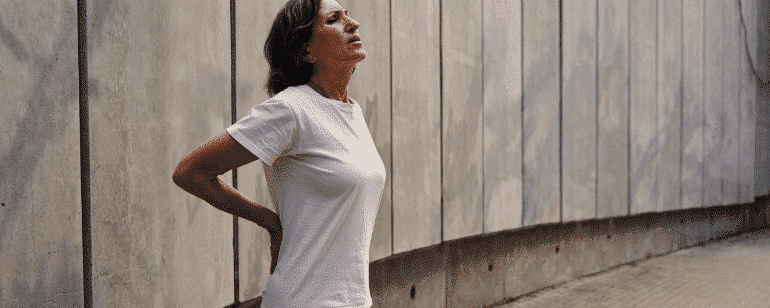Muscular dystrophy is an inherited muscle disorder that causes existing muscle tissue to atrophy. If the genetic defects lead to a lack of proteins that are important for muscle metabolism, this is immediately noticeable in an increasing weakening of the muscles. With muscle atrophy, simple movements can no longer be carried out precisely and effortlessly, which can severely limit the quality of life.
But even if muscular dystrophy has so far been considered incurable, targeted physiotherapy can help to significantly improve the functionality and mobility of the muscles and, if possible, preserve the muscles that are still functioning. If the muscles are moved regularly and with certain exercises, strength and flexibility are trained and the disease process is slowed down or, at best, stagnated. A mixture of stretching, strength and coordination exercises work wonders and help to maintain and strengthen the body in its current state.
Exercises for muscular dystrophy
1. Slight stretching of the lateral back muscles
The first exercise is about stretching the body in a supple and relaxed state. To do this, lie on your back so that your gaze is pointing straight up. Now bend your right leg. Grab your right knee with your left arm and cross your right leg over your left. To make the stretch more effective, you can turn your head to the right. Repeat the same with the other side. The ideal would be to hold each stretch (left and right side) for 30 seconds.
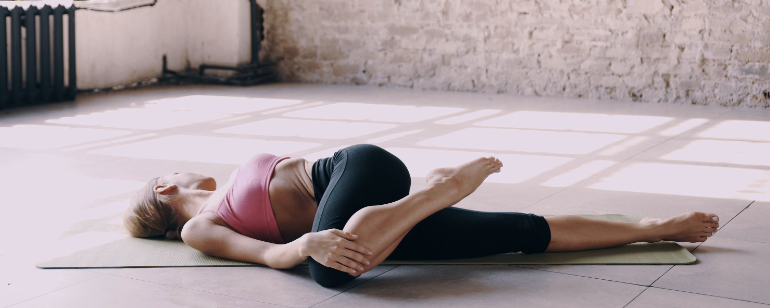
2. Arm and chest strengthening
Lay two small water bottles or weights by your side before beginning the exercise. This strength exercise requires regular training and, depending on your physical condition, can be increased with heavier weights. But first the description! First, lying on your back, grab the first weight with your right hand and bend your arm so that it touches your right shoulder. Once your arm has adjusted to the weight, you can stretch it out again. Repeat this stretch and bend exercise for about 1 minute, then switch to the other arm. Now you can grab the weights with both arms parallel and repeat this exercise. Then stretch both arms straight up with the weights and lower them straight to the side. This exercise sequence can also be carried out for about a minute.
3. Stretching of the back muscles
Roll onto your stomach and place your hands next to your face. Now push yourself up with your arms while keeping your hands on the floor. The higher you get, the more you can feel the stretch in your back. Remain in this stretching position for about 30 seconds.

4. Moment of relaxation
To relax from the last exercise and counterstretch, you can now bend your knees and move the vessel towards your heels. In this position, the arms and upper body can be stretched out and the muscles can relax.
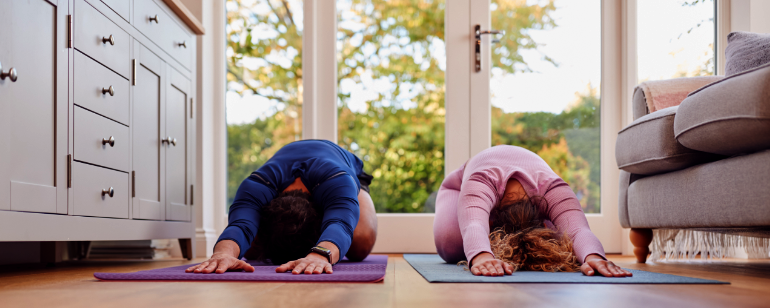
5. Strengthening of the leg muscles
Stand up slowly and use a sturdy chair to help you. Alternatively, a wall can also be used for support. Hold the back of the chair or wall with one hand and grab your right ankle with your right hand. When you find your balance, stretch toward your buttocks. The stretching session can take up to 30 seconds. The same sequence of movements should be repeated with the other side. It is advisable to repeat the exercise several times – without overloading the body.
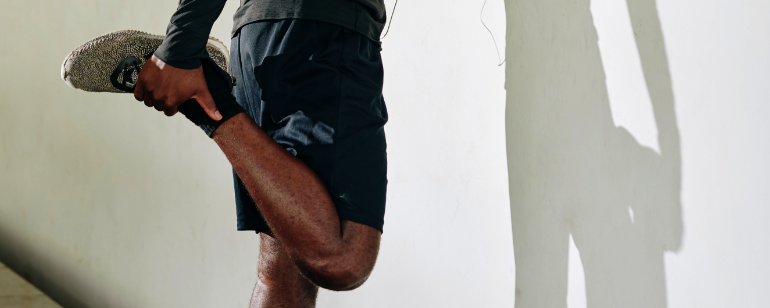
6. Focus on thighs and lower legs
Now lean against the wall with your back straight and lower your buttocks into a sitting position. The goal is to get a 90 degree angle in the shape of a chair. If your physical condition does not allow this, it is sufficient to move your buttocks towards the floor and hold the position. In any case, try to keep your back straight against the wall and breathe in and out deeply so as not to block the body. Hold the exercise for 30 seconds and repeat 5 times if possible. Afterwards, relax your legs by moving them slightly to the right and left, up and down.
7. Balance to establish coordination
Now stand up straight on both feet and stretch your arms out to the side. Lift your right leg slightly off the ground and try to keep your balance. The same goes for the left side. Make sure your back doesn’t arch too much into a hollow back. The more you tighten your abdominal muscles, the more balanced you will be. When you feel stable enough, you can lift your right leg forward and bend your knee to stretch it toward your stomach with both hands. Repeat the exercise with your left leg as well.
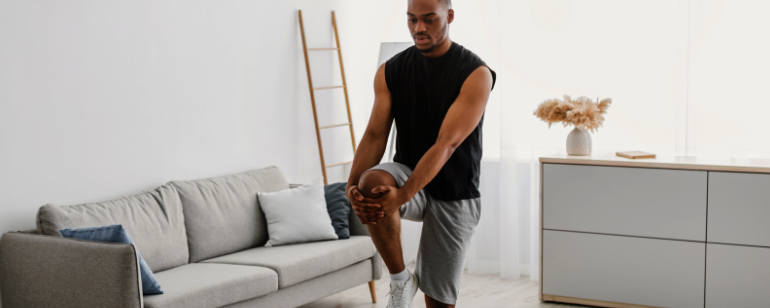
8. Strengthen upper and lower body flexibility
Stand up straight and slowly lower your arms toward the floor. Now bend your upper body down and try to touch the floor with your hands. This exercise is difficult for many people, but the progress after repeating the exercise can be seen very quickly and visibly. If you don’t manage to touch the floor with your hands at the beginning, remain in the lowest possible position. Stay there for about 30 seconds and slowly roll up, vertebra by vertebra. This exercise should be repeated at least 3 times.
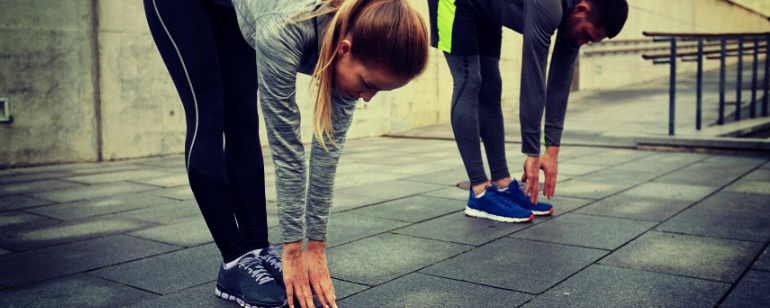
9. Sporting unit to improve condition
If the body is warmed up, it is advisable to go for a walk. While walking, you can increase the pace and take faster and longer steps. Then you can start jogging, then switch back to brisk walking and then a leisurely stroll.10 Minutes a day work wonders and keep the body strong and fit.
10. Physiotherapy as an adjunctive measure in muscular dystrophy
As part of physiotherapy, you will not only be shown other stretching, coordination and conditioning exercises, but massages, manual grip techniques or other areas of medical treatment can also be used. In addition, an individual training plan can lead to a healthy routine that is not only good for your muscles, but can also significantly improve your quality of life. Happy hormones are released during exercise, which can have a positive effect on your mood and energy.
